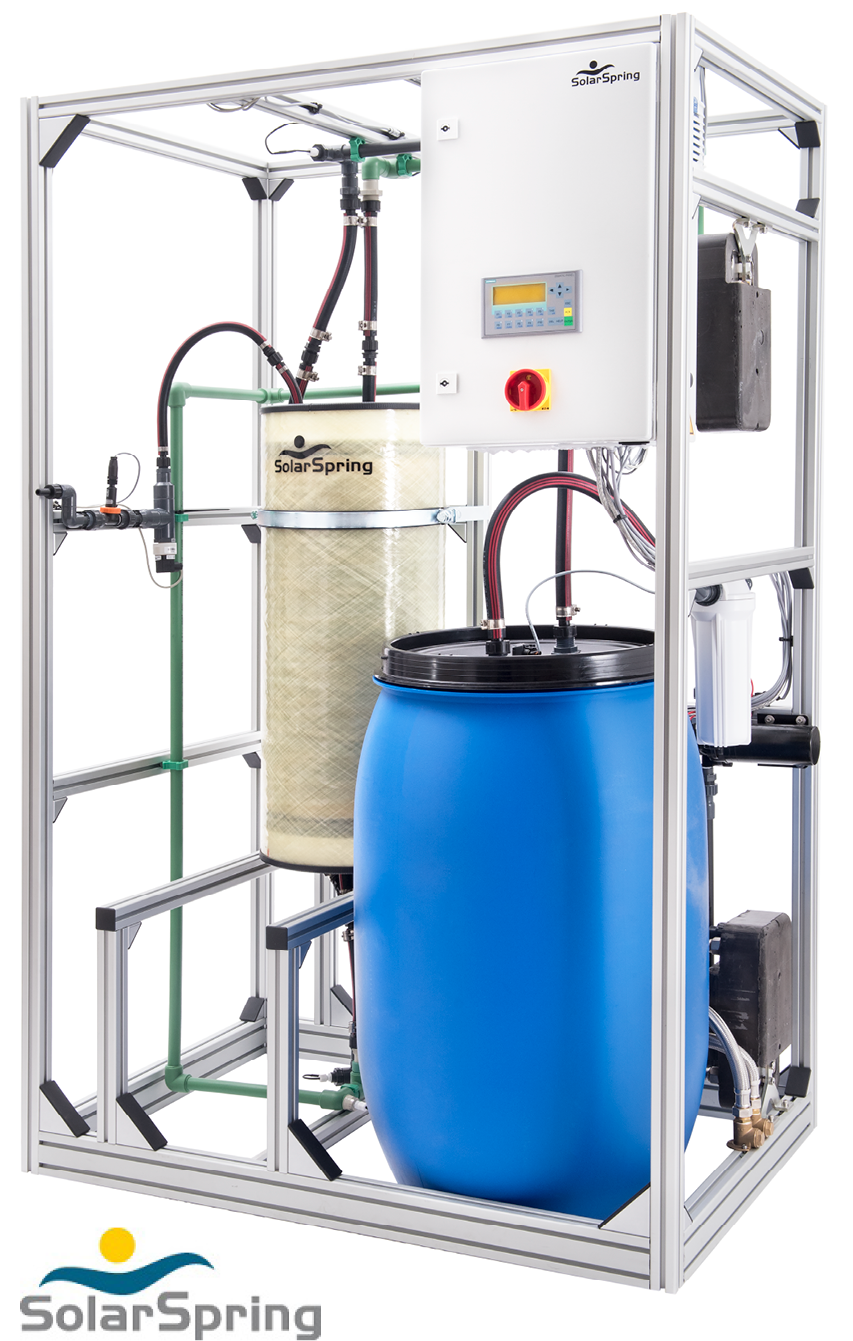Coral Taylor, University of Nevada, Reno Graduate Student
Bench-Scale Membrane Distillation System
–K. Salls Photo
Water Solar Symbiosis
NEXUS research develops solar powered water treatment technology for use in energy production
By Jane Palmer
December, 2016
Membrane Mediated Motion

Pilot-Scale DCMD System
–P. Siegmann, SolarSpring Photo
Taking It To The Road

Nevada Solar-Water Express
–J. Batista Photo

Front of the trailer showing the generator that will be used to power the experiments
and also as a waste heat source for the membrane distillation system.
–P. Faught Photo

Solar panels getting ready for installation on top of the trailer, with the top rack for the
trailer also in the background. The panels will be used to power a portion
of the trailer and the rack will be used for storage and as an elevated
source water supply location for the trailer (to gravity feed in
to non-pressurized experimental modules in the trailer).
–P. Faught Photo

Small Solar Energy Facility, Las Vegas
–A. Boeing Photo
Providing a Sustainable Water Supply for Solar Energy Production
A key objective of the NEXUS mission is to develop sustainable approaches that support the water needs for solar energy development. Using non-potable water forms a cornerstone of this goal: NEXUS scientists are currently investigating how to use such water to effectively wash solar panels at a small solar energy facility in Las Vegas. This particular project works synergistically with the evaluation of membranes for wastewater treatment. The combined goal of both projects is to provide the needed water for solar energy production primarily from non-potable water and use solar energy to drive the reuse of water. “Any water savings we incur by using non-potable water sources to wash panels and mirrors or for cooling in the solar plant contribute to the sustainability of solar energy by decreasing its water footprint,” says NEXUS Co-Principal Investigator and water lead Jacimaria Batista, a professor in the department of civil and environmental engineering and construction at the University of Nevada Las Vegas.
_______________________________________

NEXUS Notes is a monthly publication of the Solar Nexus Project, which is a five-year research project funded by the National Science Foundation’s Experimental Program to Stimulate Competitive Research “EPSCoR” (Cooperative Agreement #IIA-1301726) focusing on the nexus of (or linkage between) solar energy generation and Nevada’s limited water resources and fragile environment.
Any opinions, findings, and conclusions or recommendations expressed in this material are those of the author(s) and do not necessarily reflect the views of the National Science Foundation.
_______________________________________
If you would like to know more about the NEXUS project,
please contact, Dr. Gayle Dana
Gayle.Dana@dri.edu
530-414-3170
_______________________________________







